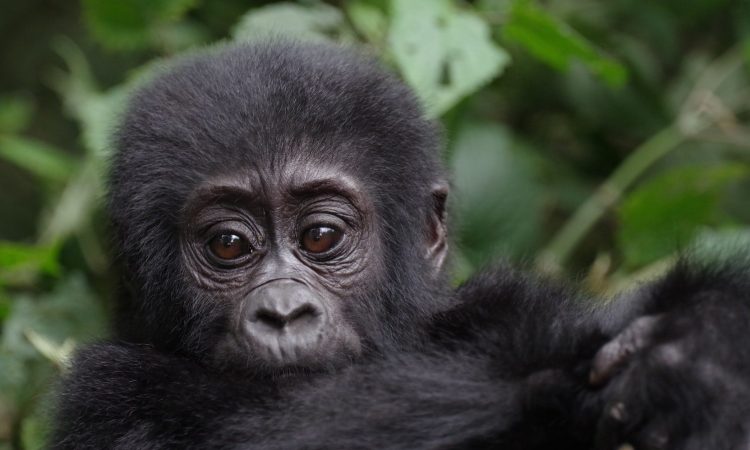Chimpanzees are divided into two species: Bonobo chimpanzees and Common chimpanzees. While they have some similarities, they also differ in habitat, size, behavior, and diet. The Bonobo, also known as the dwarf chimpanzee or pygmy chimpanzee, lives in the primary and secondary forests of the Congo Basin in the Democratic Republic of Congo, Central Africa.
Recommended Package: 3-Day Bonobo Tour
Bonobos can be recognized by their long, parted hair on the head, black face with pink lips, a small tail tuft, and longer legs. Because of political problems in the Democratic Republic of Congo, there has been less research on Bonobos compared to other chimpanzees.
The Bonobo population is estimated to be between 30,000 and 50,000 in the wild. This small number means they are classified as endangered. Bonobos are known for solving conflicts through sexual contact, unlike other chimpanzees who may use aggression to protect their territory.
Like other great apes, Bonobos communicate using facial expressions, body language, hand gestures, and sounds. They use these forms of communication when grooming, feeding, playing, or when they feel danger.
Bonobos are less aggressive. Some studies show that their brains have larger areas related to sensing distress and feeling empathy. This may explain why they behave more peacefully than other chimpanzees.
Bonobos are omnivores. They mainly eat fruits, leaves, and stems, but they also eat honey, eggs, flying squirrels, small duikers, and small monkeys. One big difference is that Bonobo communities are led by females.
Bonobos also behave differently when it comes to sex. They may engage in activities like tongue kissing, oral sex, and touching each other’s genitals. Female Bonobos usually have their first baby between the age of 4 and 6 and breastfeed the baby until it is 3 or 4 years old.
Adult male Bonobos may mate with young females who are not yet ready to have babies. Mothers sometimes help their sons mate with more females. A male Bonobo’s social rank depends on his mother’s rank. In Bonobo groups, females are more dominant and can be more aggressive. The bond between mothers and sons stays strong throughout life.
Bonobos live in large groups of over 100 members. During the day, they split into smaller groups to search for food. At night, they return to the same place to sleep and build their nests.
Book Your Tour Now
If you want to add more days or visit more places, please contact us through our main contact page using the button below.


















